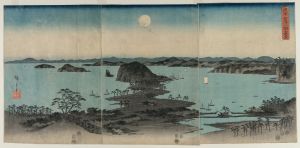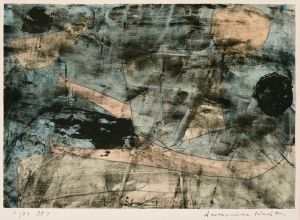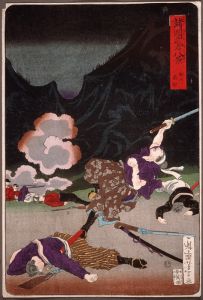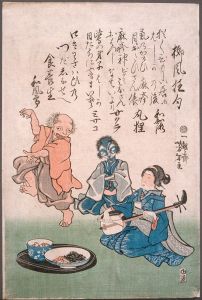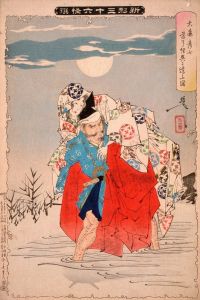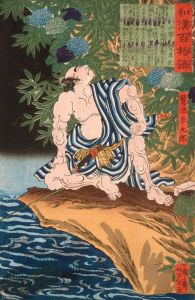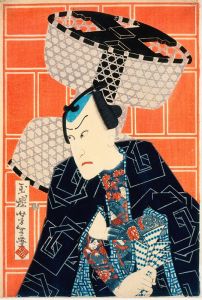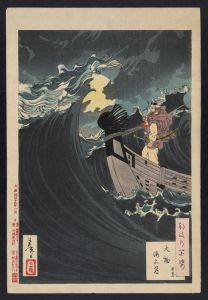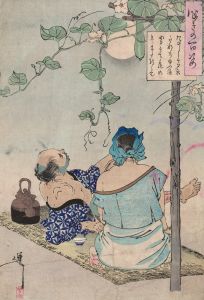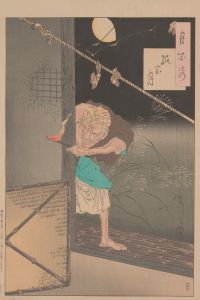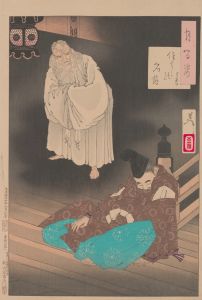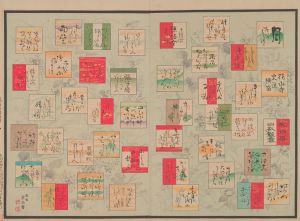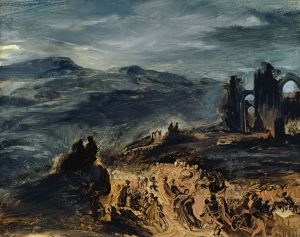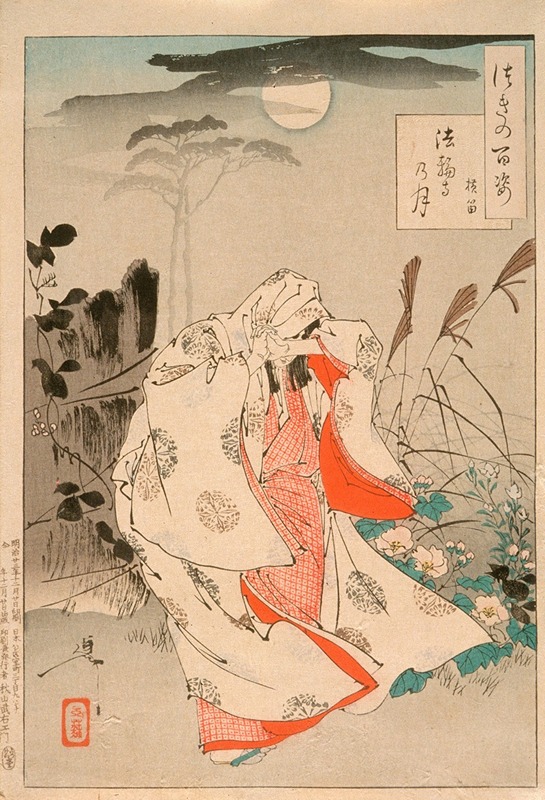
Yokobue Waiting from Takiguchi Tokiyori by Moonlight at Hōrinji
A hand-painted replica of Tsukioka Yoshitoshi’s masterpiece Yokobue Waiting from Takiguchi Tokiyori by Moonlight at Hōrinji, meticulously crafted by professional artists to capture the true essence of the original. Each piece is created with museum-quality canvas and rare mineral pigments, carefully painted by experienced artists with delicate brushstrokes and rich, layered colors to perfectly recreate the texture of the original artwork. Unlike machine-printed reproductions, this hand-painted version brings the painting to life, infused with the artist’s emotions and skill in every stroke. Whether for personal collection or home decoration, it instantly elevates the artistic atmosphere of any space.
Tsukioka Yoshitoshi (1839–1892) was a renowned Japanese ukiyo-e artist, known for his innovative approach to traditional woodblock printing. He is often celebrated for his ability to blend classical themes with modern sensibilities, capturing the complexities of human emotion and the supernatural in his works. One of his notable series is "One Hundred Aspects of the Moon" (Tsuki hyakushi), which he created between 1885 and 1892. This series consists of 100 woodblock prints, each depicting a scene inspired by Japanese and Chinese history, literature, and folklore, all unified by the motif of the moon.
The print "Yokobue Waiting from Takiguchi Tokiyori by Moonlight at Hōrinji" is part of this celebrated series. It illustrates a poignant moment from Japanese history, focusing on the character Yokobue, a lady-in-waiting, and her connection to Takiguchi Tokiyori, a samurai. The story of Yokobue and Tokiyori is a tale of unrequited love and devotion, which has been a popular subject in Japanese literature and art.
In the print, Yoshitoshi captures Yokobue waiting by moonlight at Hōrinji, a temple known for its serene and contemplative atmosphere. The composition is marked by its delicate interplay of light and shadow, with the moon casting a gentle glow over the scene. Yoshitoshi's use of color and line work is meticulous, highlighting the emotional depth of Yokobue's longing and the tranquil beauty of the temple surroundings.
Yoshitoshi's work is often noted for its psychological depth and its ability to convey complex emotions. In "Yokobue Waiting from Takiguchi Tokiyori by Moonlight at Hōrinji," he employs these skills to evoke a sense of melancholy and introspection. The moon, a recurring symbol in Yoshitoshi's series, serves as a metaphor for the passage of time and the enduring nature of human emotions.
The "One Hundred Aspects of the Moon" series, including this particular print, is significant not only for its artistic merit but also for its cultural and historical value. It reflects the Meiji era's (1868–1912) transition in Japan, a time when the country was opening up to Western influences while still holding onto its traditional roots. Yoshitoshi's work embodies this duality, merging classical Japanese aesthetics with a modern sensibility that appealed to both contemporary and future audiences.
Yoshitoshi's prints, including "Yokobue Waiting from Takiguchi Tokiyori by Moonlight at Hōrinji," continue to be studied and admired for their technical excellence and emotional resonance. They offer a window into the cultural and artistic landscape of 19th-century Japan, providing insight into the themes and stories that captivated the imaginations of people during that time. Through his masterful use of the woodblock printing technique, Yoshitoshi has left an indelible mark on the world of art, ensuring that his works remain relevant and appreciated to this day.





